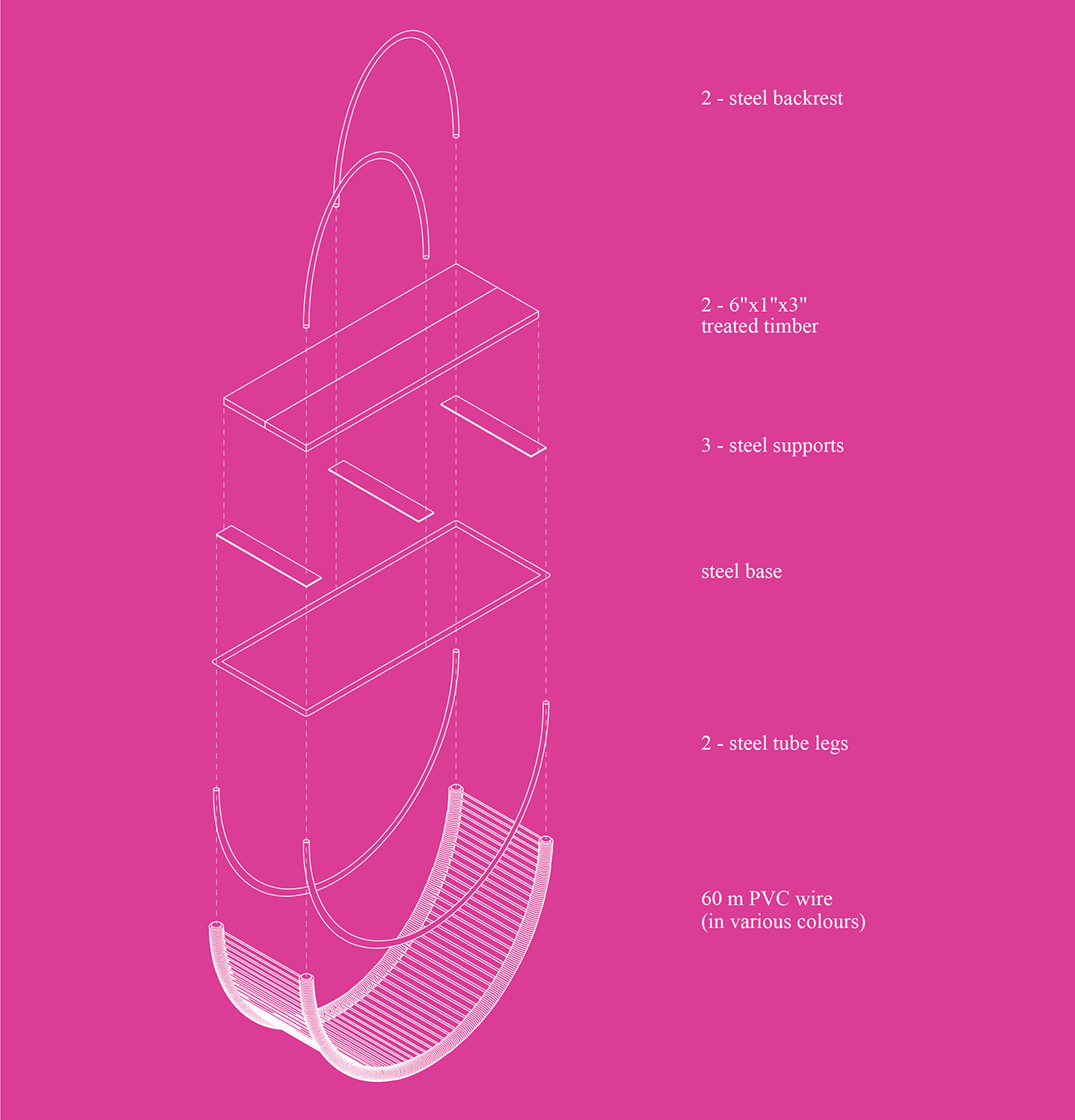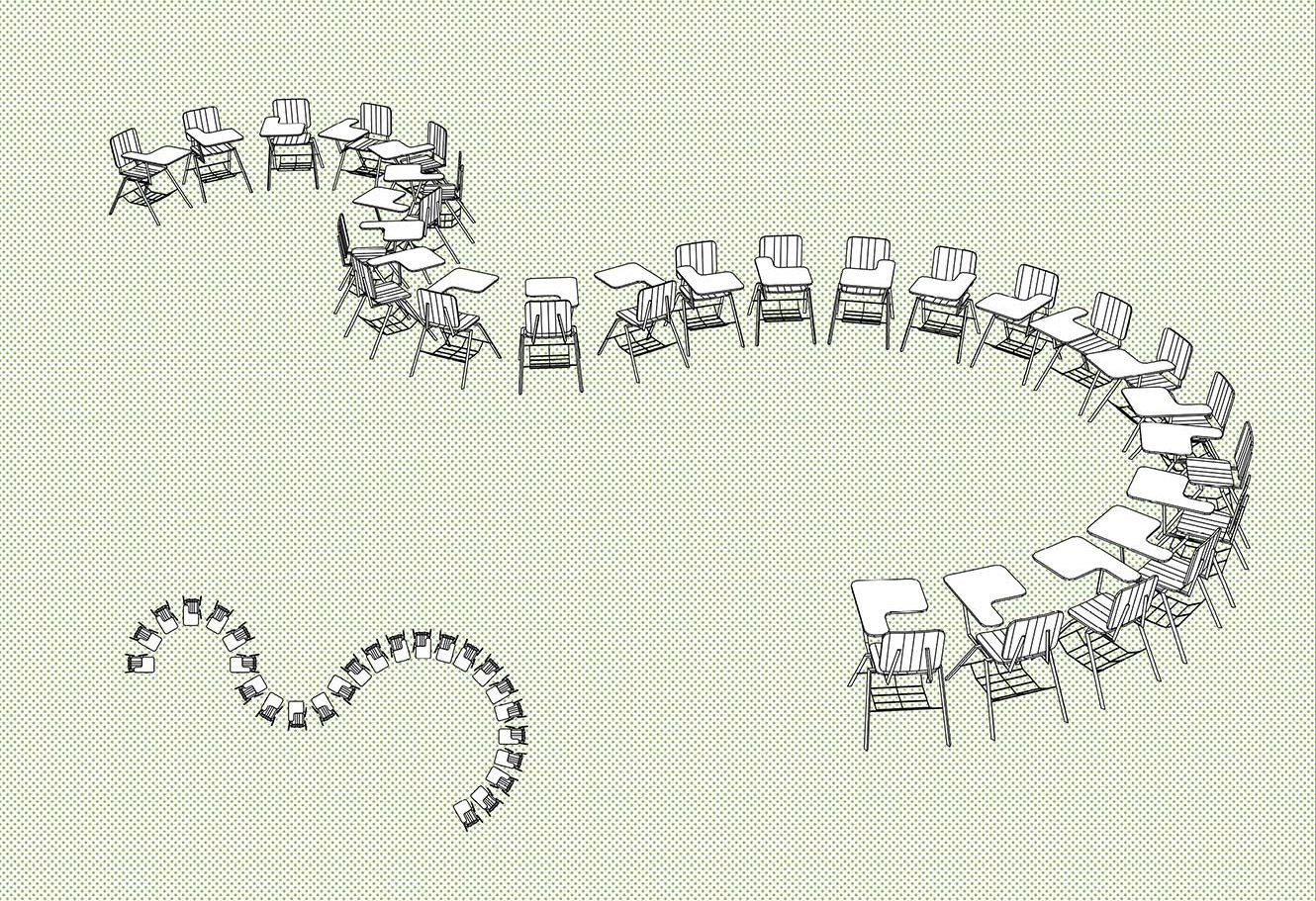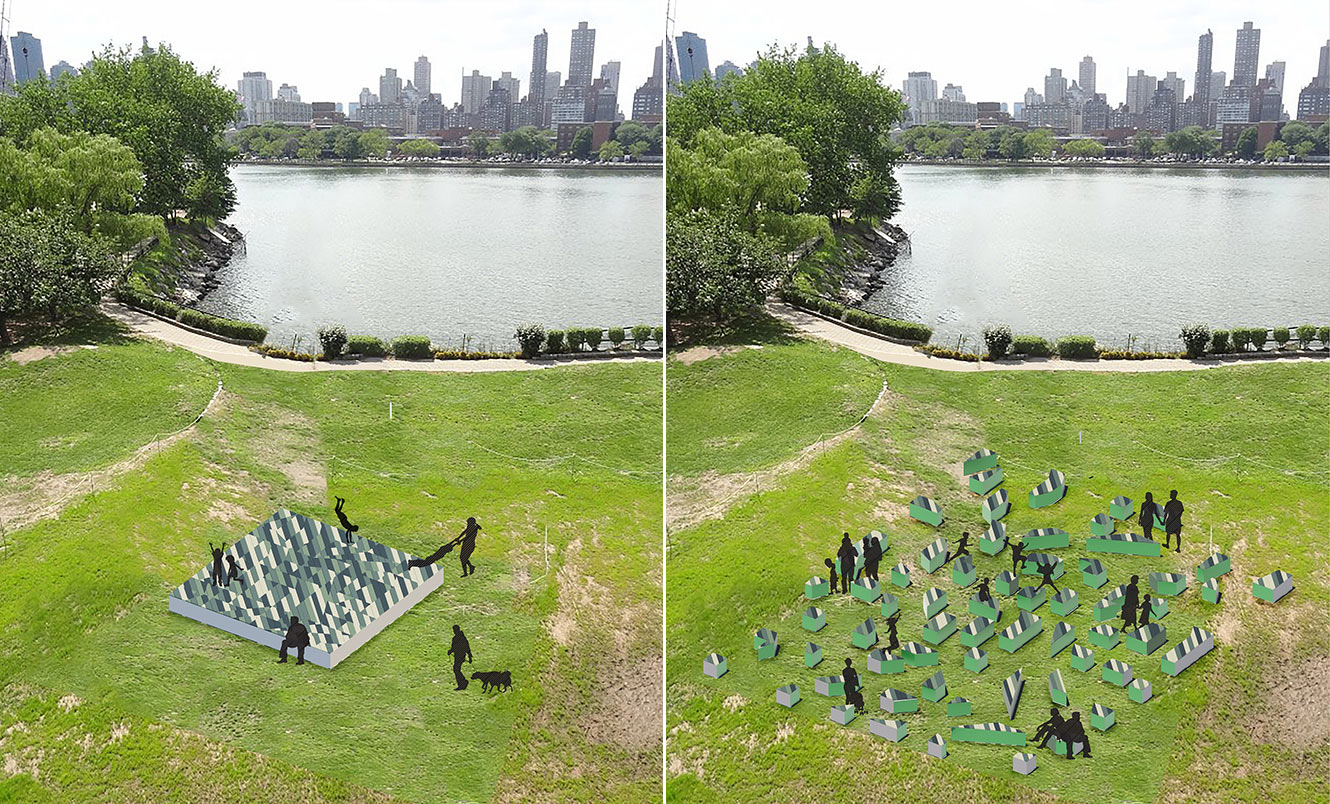Worms, wimples, and wobbles
When is a chair not just a chair? The Architectural League's Antonio Huerta discusses notable entries to the 2018 Folly/Function competition, Seats.
May 9, 2018
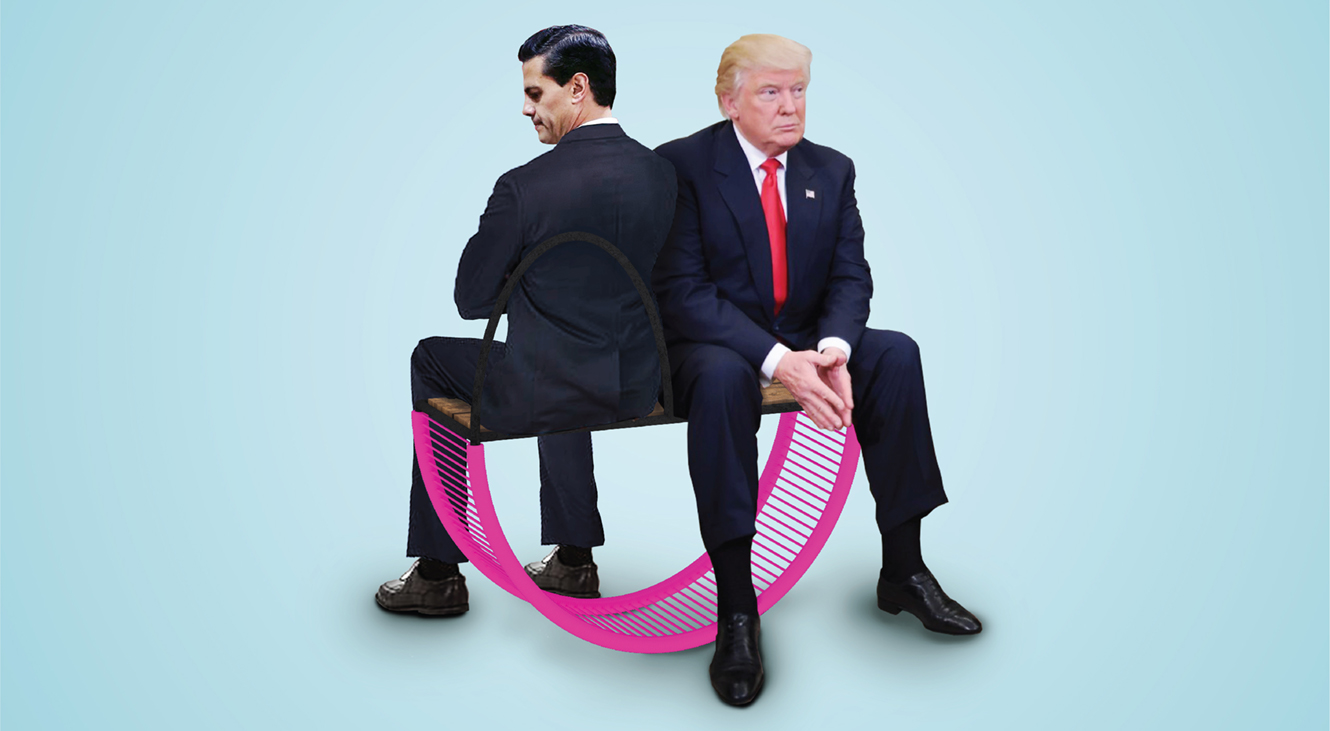
UNI. Design team: Rolando Girodengo, Adrián Flores, Carolina Segura, and David de la Garza
Located on the Queens waterfront, Socrates Sculpture Park offers panoramic views of the New York City skyline. Its frequent (and free) public programming ranges from art installations to children’s workshops, attracting around 90,000 visitors each year.
Since 2011, The Architectural League has teamed with Socrates for an annual juried competition called Folly/Function. This year, the call for entries focused on outdoor seating for the park. The ask: submit a design for 25 chairs able to withstand harsh conditions, move around the site, be fabricated on time and within budget, and have a unique visual identity.
A jury composed of architects, furniture designers, and sculptors reviewed the 91 entries. The winning project, a 3D-printed concrete design called RRROLLING STONES, will be installed in early July.
A number of other projects also stood out to the jury. Some are linked by common theme—the puzzle, for example—while others offered a particularly unique interpretation of the competition brief.
The political statement
UNI
A team of designers from Monterrey, Mexico, proposed UNI, a simple rectangular wooden plank resting on a half-wheel made of steel wire. This take on the classic tête-à-tête chair requires the balancing weight of two people; without both sitters, it’s useless.
The striking image of President Donald Trump and President Enrique Peña Nieto seated in the chair makes UNI’s political message clear: Nations, just like individual people, are interdependent. Taking this idea further, the team proposed fabricating the chairs with steel from Mexico and wood from New York.
UNI is perhaps the year’s most unique entry, tackling political turbulence and cultural discord with a touch of wobbly humanity.
The readymade
Assigned Seating
This project’s power lies in the visceral reaction provoked by the school chair. The designers proposed installing 100 desks discarded from New York City public schools, creating a playful tension between the readymade’s institutional roots and its new recreational setting.
The Brooklyn-based team showed six different orientations for the chairs (including the sinuous line shown above), but the concept would also enable park visitors to arrange the chairs to suit their needs.
The monstrosity
Worms! The Mutants of Hell Gate

Design team: Dan Bergsagel, Steve Kennedy, Laura Hannigan, Phil Isaac, Annabel Koeck, and Sinead Conneely
One of this year’s cheekiest submissions, Worms! The Mutants of Hell Gate took inspiration from pulp fiction. Sixteen mutant worms have spawned in the heavily polluted East River, the team wrote in its proposal, and slithered into Socrates Sculpture Park.
The team—a London-based collective of engineers, architects, and designers—suggested cutting heavy-duty truck tarpaulin shells, filling them with foam swimming noodles, and sealing the ends to create 10-by-2-foot forms. These colorful, flexible “worms” could be easily moved around the site and arranged in different configurations.
The tricksters
Hako
Hako is a trickster, Brooklyn designer Katsuya Arai wrote in his competition entry. Meaning box in Japanese, Hako is a large black box esconding 28 chairs. Twenty-four chairs fold out easily from cubbies on two sides, remaining connected to the larger structure by cables. Four additional chairs rest inside.
Hako’s larger architectural gesture sets it apart from other entries. It’s not a collection of chairs, but rather an apparatus that sheds chairs from its skin. It serves as its own storage system, meets the ground on wheels for easy relocation, and affords users the flexibility to move individual chairs within the area delineated by its cables.
Wimple
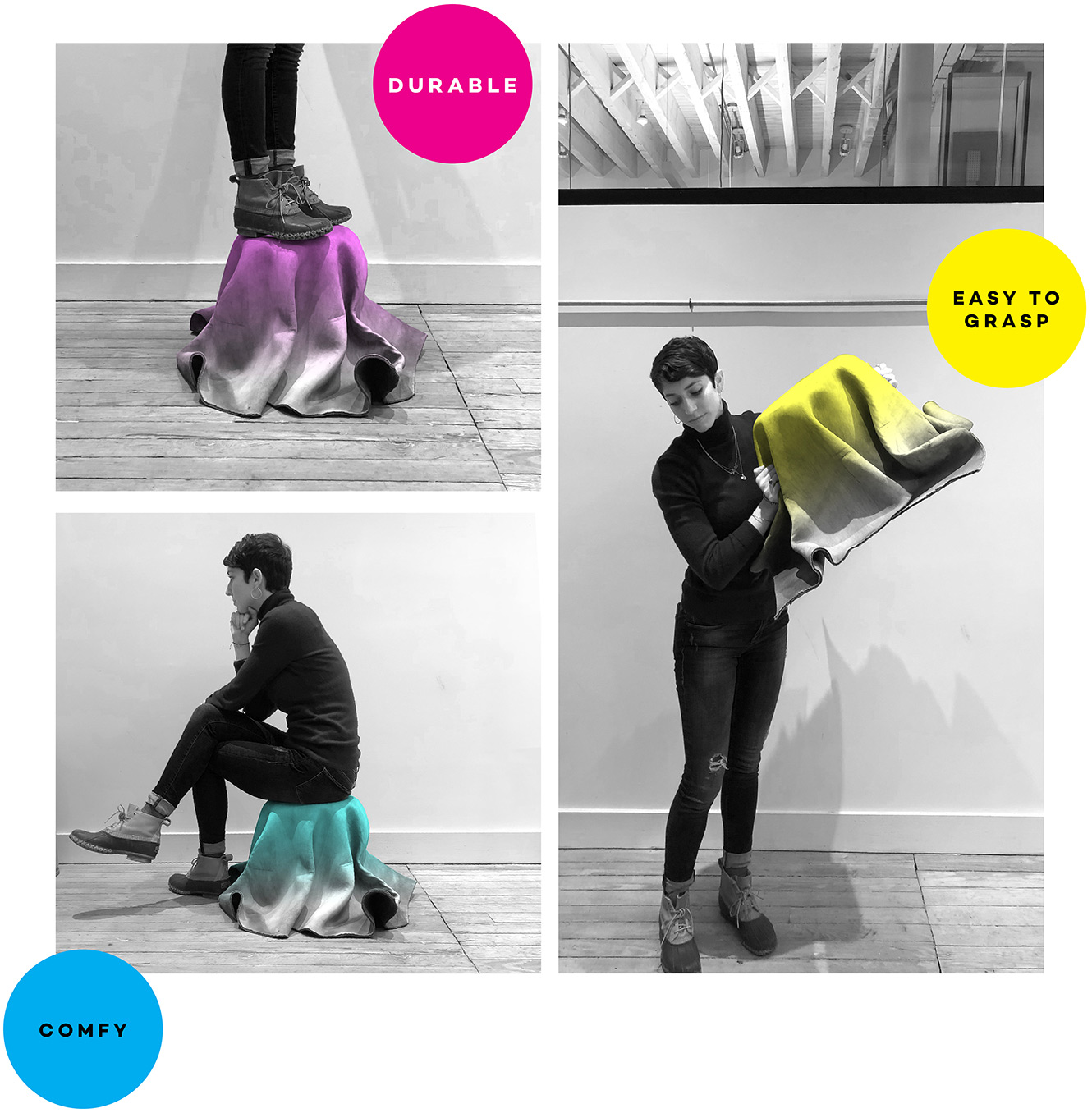
Design team: Stephanie Nguyen, Alex Witko, Andrew Miller, Ariel Resnick, Jason Kim, Jonny Steen, Jonathan Fernandes, Michelle Gonzalez, Nate Oppenheim, and Tamarah Mata-Lasky.
Wimple is a material illusion: It resembles a silky draped cloth, but is solid to the touch. The chair is made from concrete-impregnated fabric, which the designers at Manhattan-based Leroy Street Studio have been working with for several years. Their material experimentation is remarkable. Concrete isn’t supposed to produce a lightweight or easily movable chair, but it does, and it’s built to last.
The puzzles
Dazzle Puzzle
The New York-based team tentwenty proposed Dazzle Puzzle, which is composed of 66 pieces that combine to create a 15-by-15-foot platform.
Molded into one of 21 distinct shapes, each lightweight geofoam unit is covered in a camouflaged recycled plastic lumber and sided with green and white.
Dazzle Puzzle lets park visitors experiment with different uses and arrangements. Stack it. Twist it. Spin it. Explore and experiment—and when you need a rest, sit!
One to Many
Another puzzle project, One to Many is a bench created from a single slab of limestone divided into multiple parts that are supported by a grid of vertical and horizontal legs. When the puzzle is correctly assembled, the limestone slab creates a platform—or, as Brooklyn designer Arielle Assouline-Lichten wrote in her proposal, a “plinth for city viewing.” The pieces can also be spread throughout the park for greater flexibility.
One to Many’s material palette pays homage to New York City’s traditional use of limestone in parks, monuments, and buildings, connecting the proposal to its wider urban setting.
Explore
Folly/Function 2016: Finalists
The League’s Marta Elliott discusses the two finalists in the 2016 Folly/Function competition.
Folly 2015: Notable entries
Sophie Elias surveys themes that emerged among the 2015 Folly submissions.
Folly 2014: Notable entries
A look at the finalists for the 2014 competition.

